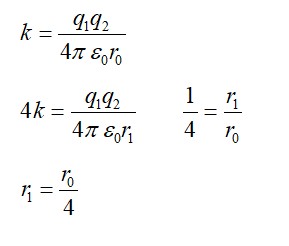13.23 In a periodic table the average atomic mass of magnesium is given as 24.312 u. The average value is based on their relative natural abundance on earth. The three isotopes and their masses are
(23.98504u),
(24.98584u) and (25.98259u). The natural abundance of is 78.99% by mass. Calculate the abundances of other two isotopes.
13.23 In a periodic table the average atomic mass of magnesium is given as 24.312 u. The average value is based on their relative natural abundance on earth. The three isotopes and their masses are
(23.98504u),
(24.98584u) and (25.98259u). The natural abundance of is 78.99% by mass. Calculate the abundances of other two isotopes.
-
1 Answer
-
13.23 Average atomic mass of magnesium, m = 24.312 u
Mass of magnesium isotope ,= 23.98504u
Mass of magnesium isotope
M g 12 25 m 2 Mass of magnesium isotope
M g 12 26 m 3 Let the abundance of magnesium isotope
M g 12 24 η 1 Let the abundance of magnesium isotope
M g 12 25 η 2 Therefore, the abundance of magnesium isotope
M g 12 26 η 3 = (21.01 – x)%
The average atomic mass can be expressed as:
m =
m 1 η 1 + m 2 η 2 + m 3 η 3 η 1 + η 2 + η 3 23.98504 × 78.99 + 24.98584 x + 25.98259 ( 21.01 - x ) 100 1894.578 + 24.98584 x + 545.894 - 25.98259 x 100 2440.472 - 0.99675 x 100 24.312 =
2440.472 - 0.99675 x 100 x = 9.3%
Therefore the abundance of
M g 12 25 M g 12 26
Similar Questions for you
Q = [4 *4.0026 – 15.9994] *931.5 MeV
Q = 10.2 MeV
for B,
for B,
Taking an Exam? Selecting a College?
Get authentic answers from experts, students and alumni that you won't find anywhere else
Sign Up on ShikshaOn Shiksha, get access to
- 65k Colleges
- 1.2k Exams
- 682k Reviews
- 1800k Answers


